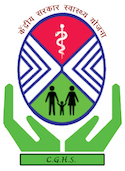Are All Headaches Migraine?
Headache classification based on symptoms is misleading and confusing. The classification of headaches depends on the description of pain, associated features, and whether or not they are a disease entity with characteristic duration, frequency, and response to treatment. However, migraine and tension-type headaches occur in different patterns depending on gender, age, and race/ethnicity.
One thing that all pain specialists agree upon is the importance of distinguishing between acute episodic headache (like cluster headache) and chronic daily headache (a new term used for patients with frequent tension-type headaches). Obviously, all patients do not have access to a specialist and may not even know their headaches are “abnormal”. Selective publication in medical journals has contributed to a great deal of confusion regarding migraine diagnosis and treatment.
The Answer
Thus the answer is “No”, all headaches aren’t migraines.
The answer to whether or not a patient has headache disorder- tension-type, chronic daily, etc. This depends on what type of headaches they have and their duration. Once you know that the rest of the information should fall into place. So if a person complains of severe pain every two weeks. Then only you can establish that they don’t have chronic daily headaches and do not qualify for this diagnosis.
The same thing goes for medication overuse symptoms which are not present when patients take short-term medication during an acute attack. Also, there is no evidence that tension-type headaches are progressive like cluster headaches or primary stabbing migraines usually are. Studies and articles that show people with tension-type headaches don’t respond to triptans. And finally, the characteristics of tension-type headaches are different in women and men.
The “unknown” Headache: Migraine
The concept of “migraine” is a very general word. Migraine is not a disease. It is just a collection of symptoms. It’s a little more complicated than just having pain around your head or neck region.
For example, A person can experience throbbing pain in another part of their body (back, jaw, stomach) during migraine attacks. Pain can also occur on both sides of the body or be bilateral during an attack of this nature. Also, some individuals may have atypical features, not really associated with headaches. These are like vomiting, dizziness, and even abdominal bloating or diarrhea without head pain during a migraine attack.
A lot of people tend to confuse tension-type headaches with migraines since they have similar symptoms. But there are major differences between the two conditions and here’s what we know so far:
For one, tension headache doesn’t trigger by neurovascular factors. This means it won’t associate with changes in blood flow or brain activity) like migraine usually is.
And also, although the pain is usually bilateral in both cases (meaning it occurs on both sides of the head), there are times when it may become unilateral (occurring only on one side). Tension-type headache sufferers also experience less nausea compared to those who get migraines. It has been observed that episodes occur more frequently in the morning, last for less than 120 minutes, and have been happening for at least 3 years.
What are the different types of headaches?
There are many types of headaches that cannot be classified into just one group. Headaches can divide into different groups based on their characteristics and frequency. These include:
- Tension-Type Headache
- Cluster Headache
- Migraine
- Cervicogenic Headache
Tension Headache
A tension-type headache is the most common type of primary headache in adults and children alike.
There are three categories:
Nausea – This type of headache causes- nausea, vomiting, or stomach upset during the attack.
Sleep disturbances – The pain triggers sleep disturbances which may lead to insomnia.
Gradual onset – As its name suggests, this type can start gradually although there are exceptions It lasts between 4-72 hours (some attacks last for 72 hours).
Cluster Headache
Cluster Headache is characterized by pain in the eye and temple regions with unilateral periorbital (around the eye) swelling. These attacks typically last about one hour, occur up to 8 times a day, and can persist every day for several weeks or months. When it hurts: People who suffer from cluster headaches may experience this type of attack once or twice daily during the peak period (5p-9a) but these can also happen at any time of the day. Now we know well that people who get cluster headaches have an abnormally high level of nitric oxide. Also, they have less activity in their serotonin receptors which results in increased levels of glutamate, histamine, and substance P in their body.
It usually responds well to oxygen. Some medications administered are called triptans or ergots which include: sumatriptan, rizatriptan, zolmitriptan. It has been shown that these cause rebound cluster headaches in some people), naratriptan and eletriptan. There’s even a preventive drug for this condition called verapamil. But these must not be used on a regular basis as they have their own side effects. If you take these drugs more than two days in a week then it could actually trigger more episodes of pain!
Cervicogenic Headache
The term cervicogenic headache refers to headaches that are caused by a dysfunction of the structures in and around your neck. This includes muscles, ligaments, cervical spine discs, facet joints, nerves, etc. These issues can cause pain in various parts of your body including your head and neck.
Although there is no strict definition for this term (the IHS only defines tension-type headache). It is most commonly used as a diagnosis when the patient’s history shows an association with their cervical spine or spinal abnormalities on examination (findings).
Tension-Type Headache vs Migraine
Tension-type headache is a condition when the absence of other alternative causes can explain the symptoms. But a diagnosis of migraine with or without aura is only possible when other causes excluded.
Symptoms that may help to differentiate between the two include:
Intensity – Tension-type headaches tend to be milder, and last from 30 minutes up to 7 days. A migraine lasts for more than 4 hours while cluster headaches last less than an hour
Pain location – Migraines usually involve the whole head, forehead, and scalp but tension-type headache pain is more specifically above the eyes.
Bilateral vs unilateral symptoms – Migraine pain happens on both sides of the head while tension-type headache pain is either bilateral or unilateral (only on one side)
Symptoms triggered by different factors – The main factors that trigger migraines are hormone changes, stress, or changes in the environment. Tension-type headaches trigger due to muscle tension and fatigue. And this condition can aggravate due to physical activities.
Attacks – Migraines can happen multiple times a week or even every day while tension-type headaches only occur several times a month. It’s also important to take note that migraines usually get worse with time while tension headache pain doesn’t worsen over time
Ayurvedic Treatment of Neuropathy – A must Read!!
Cluster Headache vs Migraine
Even if all of these headaches are primary headaches. Cluster Headaches and migraines are different types of headaches. In fact, there is no definitive link between these two. There are many similarities but also a few differences that make each one unique. Here’s what you should know:
Symptoms – Both migraines and cluster headaches have pain on both sides of the head or in just one side. Although rare cases may indicate more than one type at the same time (such as an aura with a migraine)
Attacks – Migraines last for about 4 hours while cluster headaches can last from 30 minutes up to 1 hour which makes them shorter in nature
Frequency – They happen more often. While migraines occur less than 15 days per month, cluster headaches can happen up to 8 times in a day and every day for weeks or months.
Intensity – Cluster headaches are more severe than migraines
Causes – Cluster headaches connect with the trigeminal nerve system. While migraines are not clearly established as they could be related to vascular changes that occur in the brain. (Know About Trigeminal Neuralgia)
Triggers – Those suffering from migraines usually find their symptoms triggered by: hormonal changes, weather change, stress, anxiety, or certain physical activities. On the other hand, those with cluster headaches tend to get these attacks after having consumed alcohol or even smoked cigarettes.
Cervicogenic headache vs migraine?
Usually, patients with cervicogenic headaches are initially diagnosed with migraine headaches. This is because:
1. The headache pattern is often indistinguishable from typical migraines.
2. Many people suffering from chronic neck issues develop migraines to compensate for their pain (i.e. central sensitization). This makes it difficult to differentiate between the two, especially if you don’t perform a thorough examination that includes testing of the nervous system’s function and integrity.
There is much debate about whether or not cervicogenic headaches are usually considered “true” migraines. Instead of another type of headache entirely – some experts even claim that they aren’t headaches at all! They involve a different pathology than tension-type and other more common primary headaches. I believe that if the headaches are caused by issues within the cervical spine, they should be considered a separate entity from other types of primary headaches.
The Conclusion
Headaches are a problem for many people and it can be difficult to figure out what type of headache you have. Thankfully, there’s help available from Sukhayu Ayurved if you need treatment for your headaches! If you think that you might have tension headaches, cluster headaches or migraines- WhatsApp us on +91-9050802060 so we can put together the best plan for your condition. You don’t want to take medication without talking with someone who knows how these conditions work. Consultation is free and Dr. Pardeep Sharma will walk through all of this information with you! The Ayurvedic treatment of migraine like conditions is also possible through Ayurveda.














